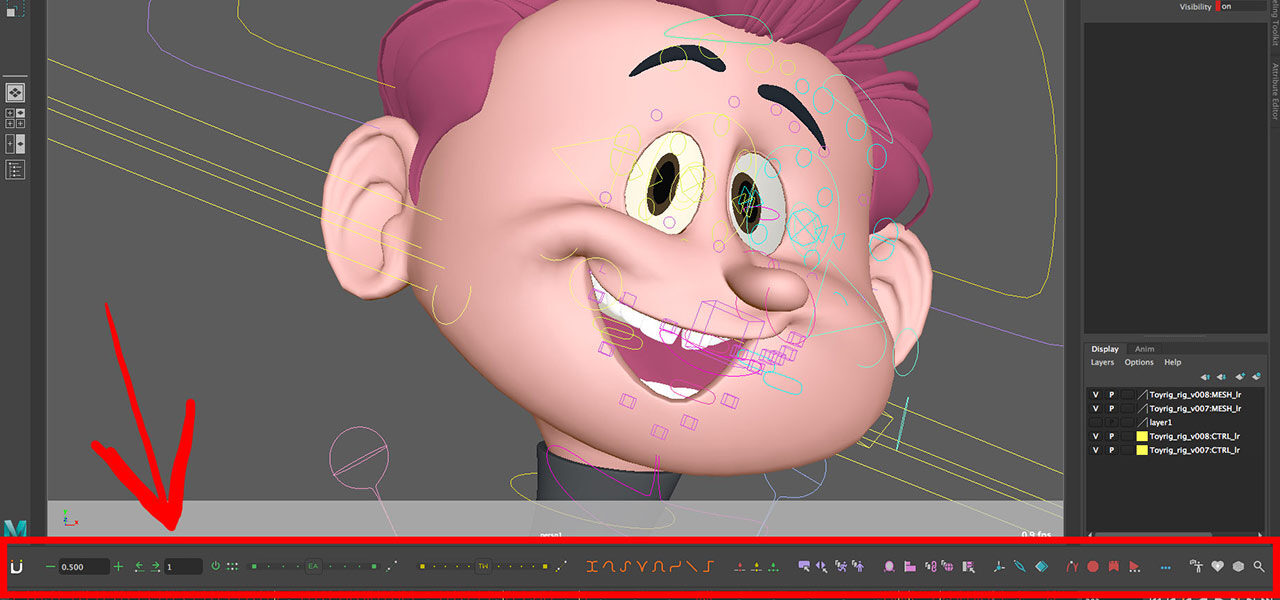

Want To Animate Faster And More Intuitively In Maya? AnimBot Is An Essential Tool
Scratch an animator and you’ll find a performer. Dig deeper and you’ll find a draftsperson. With any luck, the person wielding the stylus will have inklings of anatomy, physiognomy, perspective. Add to that mastery of tools, how puppet limbs are chained, fleshed, and clothed, and propelled with dynamics, bounce, and squash. The tools today are mostly virtual, and to stay afloat an animator must surf a never-ending wave of emerging digital technology.
Alan Camilo — a Brazilian-born animator whose credits range from Hotel Transylvania 2, Ice Age: A Mammoth Christmas, and Storks to Thor: Ragnarok and Okja — was aware, early in his career, of the disciplines required for the humble animator’s toolkit. His experience led him to carry a virtual suitcase of plug-ins from studio to studio in Vancouver, British Columbia.
Camilo subsequently developed a prototype toolbar in Autodesk Maya that caught the attention of fellow animators and technical supervisors. After continued experiments, and two years’ private development at home, he launched animBot, a suite of Maya plug-ins, as part of his quest to enrich the animator’s experience. Below, Camilo tells us how — and why — he came to create the toolset …
Cartoon Brew: What inspired you to pursue a career in animation?

Alan Camilo: I loved all Disney animated movies, especially The Lion King and Beauty and the Beast. Since I was a teenager, I wanted to do 2d animation. But then the 3d industry came along and Disney shut down their 2d department. At first, I didn’t believe that early computer animation would be able to achieve anywhere near what was done in 2d. But when I saw The Incredibles, that made me want to try 3d.
What animation tools did you bring with you from Brazil?
I worked in Autodesk 3ds Max for five years. When I came to Vancouver I worked only in Maya, and I’d download random tools from the internet. Back then, that was very common. People downloaded scripts that they carry from one studio to another. In my first contract, at Sony, I also used the tools that they had in place and incorporated them into my workflow. That sped up my work.
After Sony, I worked at another animation department where they didn’t have any tools in place and I worked much slower. That was frustrating, and it inspired me to write a simple toolbar that I could install from one studio to the next, so I’d be able to maintain a reliable workflow. I called that aTools.

How did you develop that prototype?
I used to work on it from home and I put it on the internet so I could access it at work. I would code at home, go to the studio in the morning, open Maya, and it would automatically download and update. Eventually, other animators that I was working with started using it, and then it spread like wildfire.
When you decided to create a new commercial release, entirely to your own specifications, what were your criteria for animBot?
I wanted to take that all-in-one toolset to a professional level, I knew it could be way better. One of the main aspects of animBot is the convenience of having all your tools in one place. You don’t have to rely on several tools, any one of which might break when a new version of Maya arrives. Like in a car, all the parts talk to each other and serve one purpose, which is to drive from point A to B. Similarly, an animator uses all tools in animBot together, to animate faster and more intuitively.

Your user testimonials are very enthusiastic about animBot’s features, of which there are more than 150. Would you care to name a few?
There are so many. To me, the tweener sliders are the best part of animBot. That allows an animator to intuitively design poses and anim-curves in a much broader spectrum, by simply sliding the controls left or right. That gives us much more control over polishing the animation.
AnimBot also has a motion trail that works faster than Maya’s. Grab-release is another new tool that helps animate, for example when a character is holding a cup and then releases that cup on a table. Also, there’s an animation recovery tool that will save your butt when Maya crashes!

Does all that functionality allow for greater efficiency?
Yes, some animators have doubled or tripled the speed at which they work. But that was never really my end goal. My goal is to allow animators to be more intuitive in their work, so they can forget about the technical hurdles and focus on the creative part of the work to enjoy it more. Inevitably, they become faster, which allows them more time to focus and polish their animation. They end up doing much better work.

Watch the video below to hear how industry animators benefit from using animBot:

